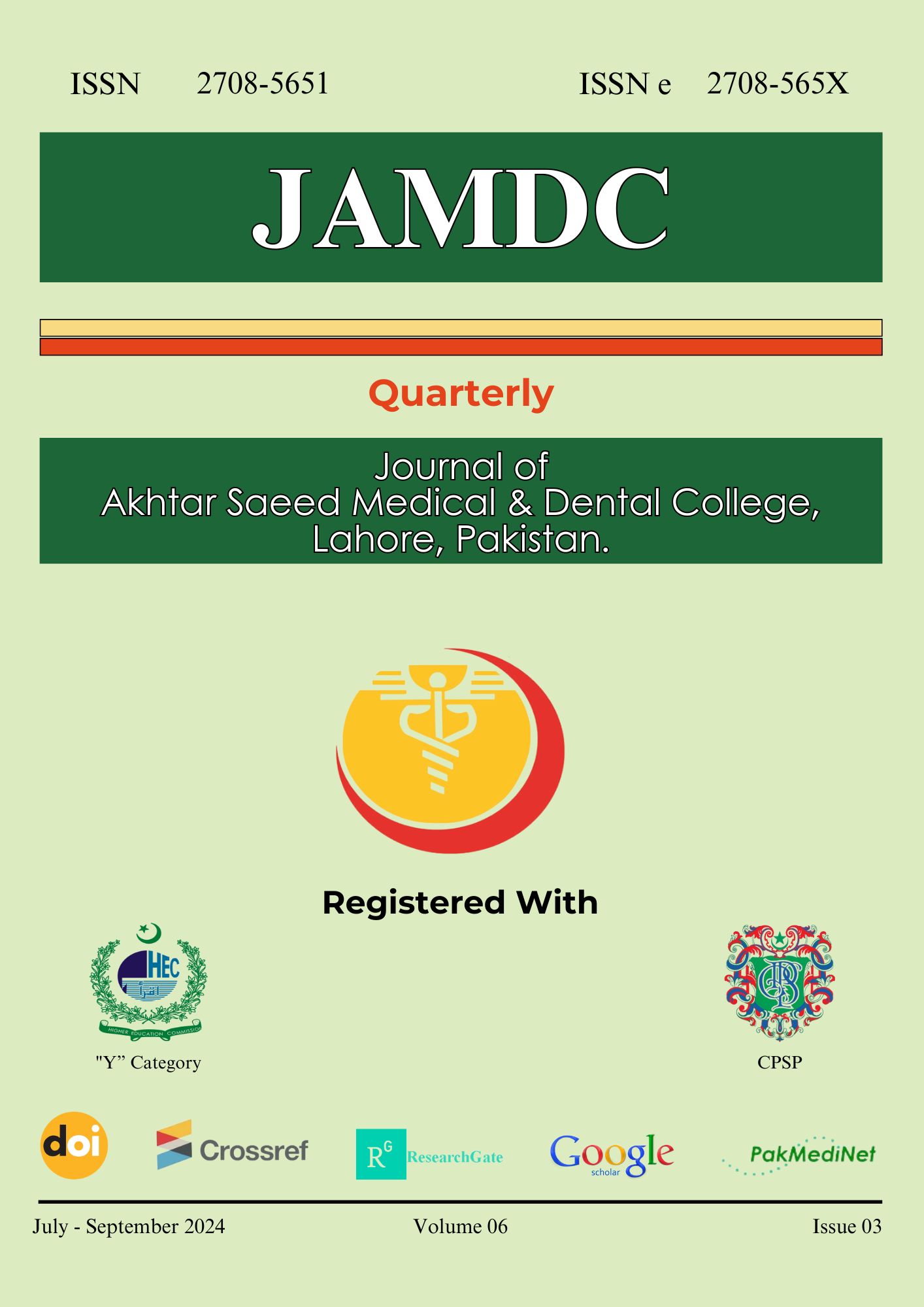EFFECTS OF GENETIC & ENVIRONMENTAL FACTORS ON THE PHARMACOKINETICS OF CEFUROXIME FOLLOWING INTRAMUSCULAR ADMINISTRATION IN HEALTHY ADULT MALES FROM PAKISTAN
Main Article Content
Abstract
Background:
Cefuroxime is an extensively prescribed broad-spectrum beta-lactam antibiotic employed to treat a wide range of bacterial infections. Variability in drug response and pharmacokinetics due to genetic and environmental variations among population subsets during
clinical trials necessitate the need for a comprehensive study of the drug’s pharmacokinetics in the Pakistani population.
Materials & Methods:
The pharmacokinetic study was carried out on eight adult male healthy volunteers at the dose of 10.7 mg/kg/intramuscular. Samples of blood were taken at predetermined time intervals 0, 0.25, 0.5, 1, 1.5, 2, 2.5, 3, 4, 5, and 6 hours. High performance liquid chromatography (HPLC) was used to measure the cefuroxime concentration in plasma. Pharmacokinetics of cefuroxime, in the Pakistani population, were determined by plasma concentration time curve using two compartment open model without lag time.
Results:
Pharmacokinetic parameters (mean±SD) were calculated and came out to be; maximum plasma concentration (Cmax) 31.35±0.90µg/ml, time to reach maximum plasma concentration (Tmax) 0.75±0.02h, volume of distribution (Vd) (0.28±0.02l/kg, half-life (t1/2) 1.4±0.1h, area
under curve (AUC) 78.7±3.56µg h/mL.
Conclusion:
In the Pakistani population it is suggested that minimum inhibitory concentration can be achieved by 1.5µg/mL of plasma level. The optimum dosage regimen of 7.31 mg/kg of body weight for the primary dose, and 7.16 mg/kg of body weight as the maintenance dose, to be repeated every 8 hours.

